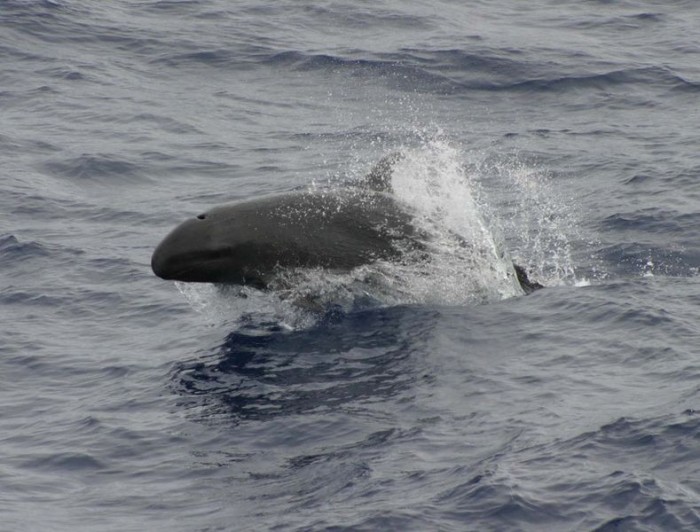
False killer whale is a top ocean predator
1. The first types of prey that many cetaceans prefer are tiny critters that form large schools closer to the surface. This includes several types of crustaceans (krill) and small fish (sardines, anchovies). And ironically enough, the largest whales prefer this type of dinner and have a built-in filter system called baleen that allows them to strain this small food from large gulps of water.
2. The second category of prey includes larger fish than the first such as laternfish, but these fish also hang out in large schools and often visit not so deep water. This category also includes schooling squid. Several species of dolphins go after this preferred type of prey and use their pointed beaks and sharp teeth to hunt and catch fish and squid. But they can only catch one fish fish at a time compared to the largest whales that take in huge amounts of tiny critters at once.
3. The next group of prey just includes really big squid that lives a solitary lifestyle in the deep. These jumbo and giant squid are sought after by the deepest diving whales including sperm whales, dwarf and pygmy sperm whales, beaked whales and pilot whales. To find these squid in the darkest ocean depths, all the whales have “well-developed melons” as described by the Encyclopedia of Marine Mammals. This trait is most likely an indication of “the importance of echolocation for prey detection in the dark depths.”
4. The fourth and final type of prey includes a diverse group of large species including many top predators such as sharks, birds, seals, sea lions and even the largest whales! Blue whales, fin whales, sei whales, sperm whales…well you get the idea. Even the biggest whales are not immune to the ocean’s top predators. And what animals are able to hunt and dine on such large species? Killer whales and maybe false killer whales and pilot whales. Transient killer whales tend to go after more manageable dinner options such as seals and seal lions, but they have gone after the bigger whales on occasion and many large whales sport bite marks on their flukes. Often killer whales will attack calves of the biggest whales. And if you have any doubt about the killer whale’s top predator status, check out this video of a killer whale taking on a great white shark!
Thanks for the info and great video link! I’m curious about false killer whales, having never heard of them before. Will you be doing a post about them?
Wait a minute, so these puppies eat pretty much everything, then? Yikes! Awesome video link, thanks.